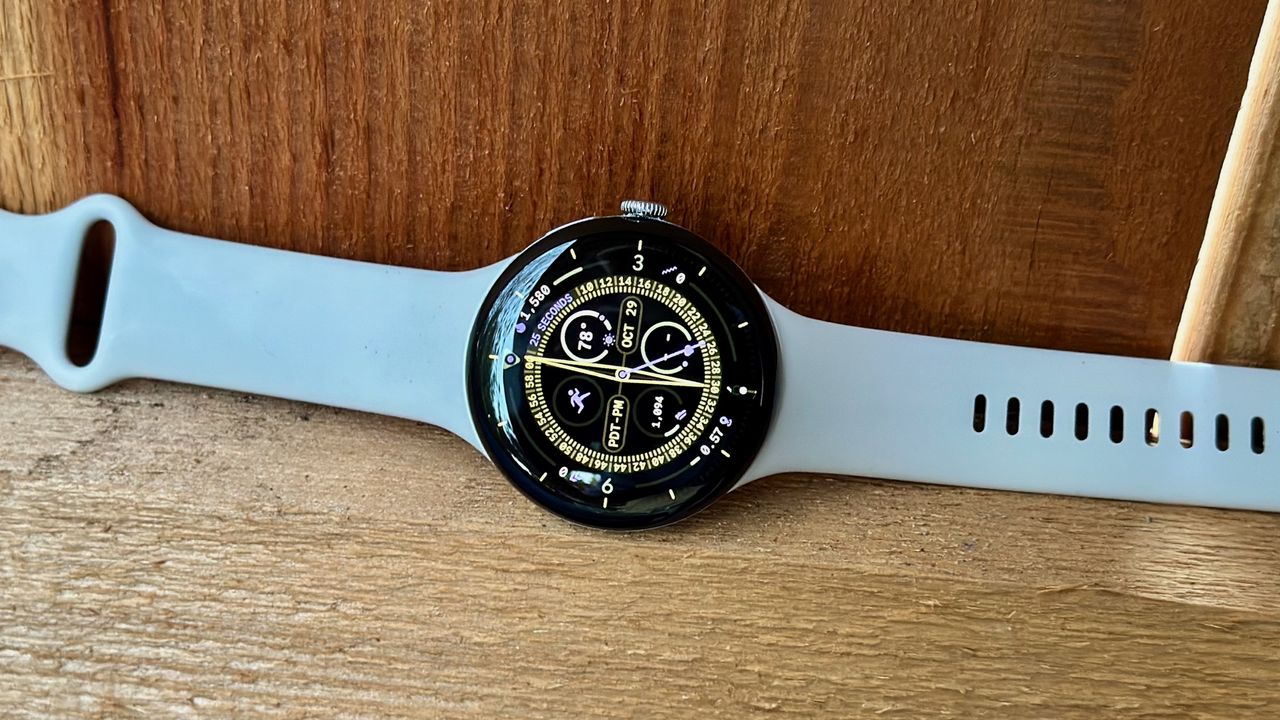
The Pixel Watch 4 is the second-best Android watch, but it's the best Gemini watch, and it's becoming one of the best fitness smartwatches. Google has been building to this stage for years, and more than die-hard Pixel fans should be paying attention.
The Pixel Watch 4 has tough competition. Samsung and OnePlus, Google's Wear OS partners, have particular strengths for software longevity (Samsung), battery life (OnePlus), ruggedness, and classic style (both), where the Pixel Watch 4 sometimes falls short.
But exclusives like satellite SOS, Loss of Pulse, Gemini Raise to Talk, and the new Fitbit Personal Health Coach make the Watch 4 stand out, and the hardware has (with one exception) dramatically improved over the last two generations.
After a month of wearing the Pixel Watch 4, I'm happy to say that it fully lived up to my expectations, with all the positives you'd expect and very few complaints.
Google Pixel Watch 4: Pricing and specs
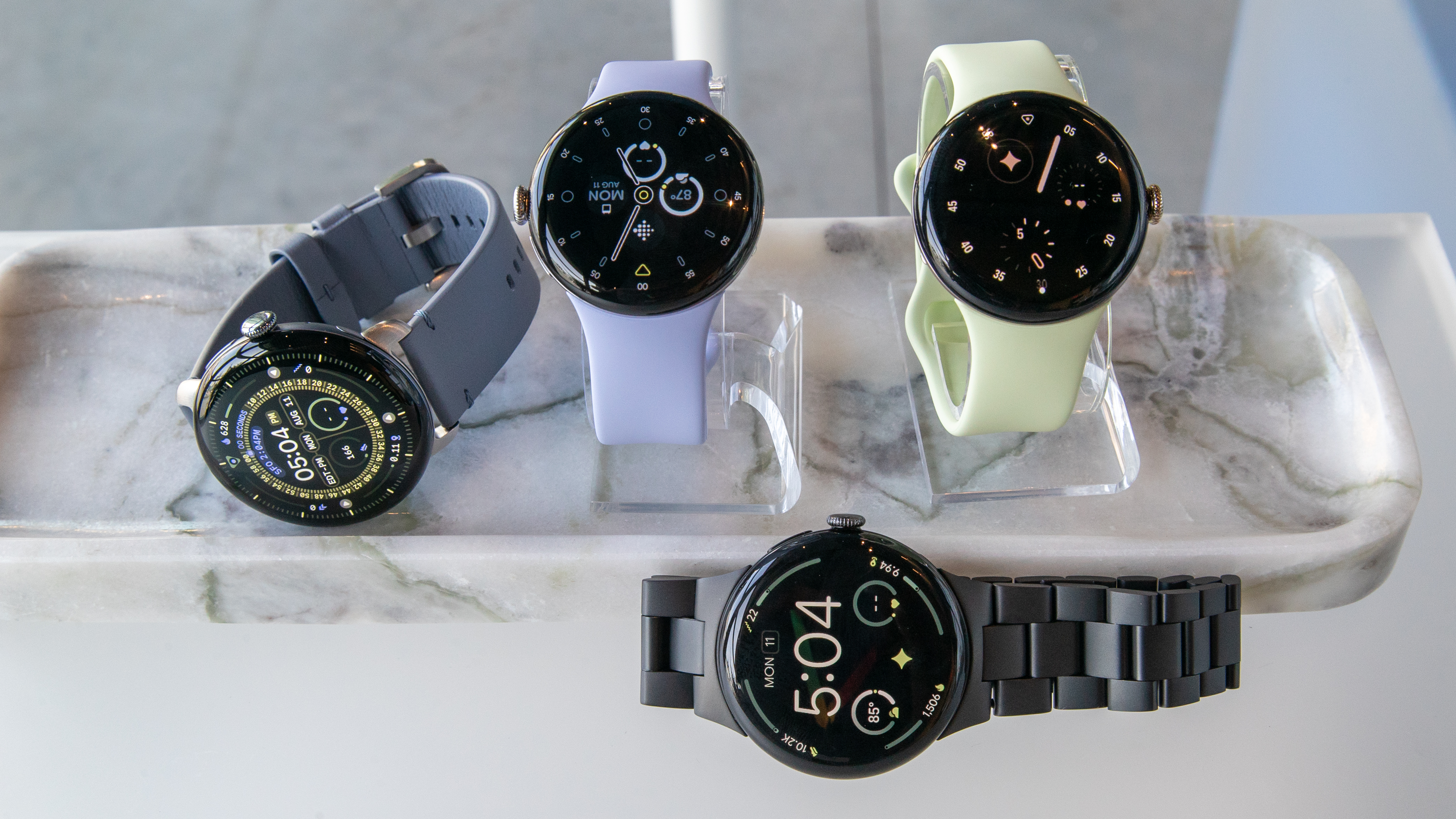
The Pixel Watch 4 launched October 9, 2025, for $349 (41mm) or $399 (45mm), with a $100 surcharge for 4G LTE and satellite SOS. Cellular models include 500MB of Google Fi messaging, navigation, and music streaming per month for two years; add it to an eligible 4G carrier for calling.
The Pixel Watch 4 45mm gives you a larger display and an estimated extra 10 hours of battery life per charge, while weighing 12–15g more with the included small or large Active band attached. The 41mm model is better suited to smaller wrists, while both fit larger wrists.
Specs |
Google Pixel Watch 4 |
|---|---|
OS |
Wear OS 6 |
CPU |
Snapdragon W5 Gen 2, Cortex M55 co-processor |
Display |
1.33- or 1.49-inch Actua 360 AMOLED LTPO display, 320ppi 3,000 nits, 1-60Hz refresh rate |
RAM / Storage |
2GB + 32GB |
Connectivity |
Bluetooth 6, Wi-Fi 2.4/5GHz, NFC, UWB, LTE (optional), dual-frequency GPS, Galileo, Glonass, (ROW) Beidou, QZSS, Navic, Satellite SOS, |
Sensors |
Compass, altimeter, barometer, magnetometer, 3-axis accelerometer, gyroscope, ambient light, multi-path optical heart rate sensor, cEDA, SpO2, ECG, far field skin temperature sensor |
Battery |
41mm: 325mAh, 30 hours with AOD, 48 hours with Battery Saver 45mm: 455mAh, 40 hours with AOD, 72 hours with Battery Saver |
Charging |
41mm: 15 minutes to 50%, 25 minutes to 80%, 45 minutes to 100% 45mm: 15 minutes to 50%, 30 minutes to 80%, 60 minutes to 100% |
Materials |
Recycled aluminum |
Protection |
Custom Corning Gorilla Glass 5, 5ATM, IP68 |
Band |
Active (fluoroelastomer) |
Dimensions |
41 x 41 x 12.3mm / 45 x 45 x 12.3mm |
Weight (w/out band) |
41mm: 31g 45mm: 36.7g |
Colors |
Matte Black, Polished Silver, Champagne Gold (41mm), Satin Moonstone (45mm) |
Google Pixel Watch 4 design and display
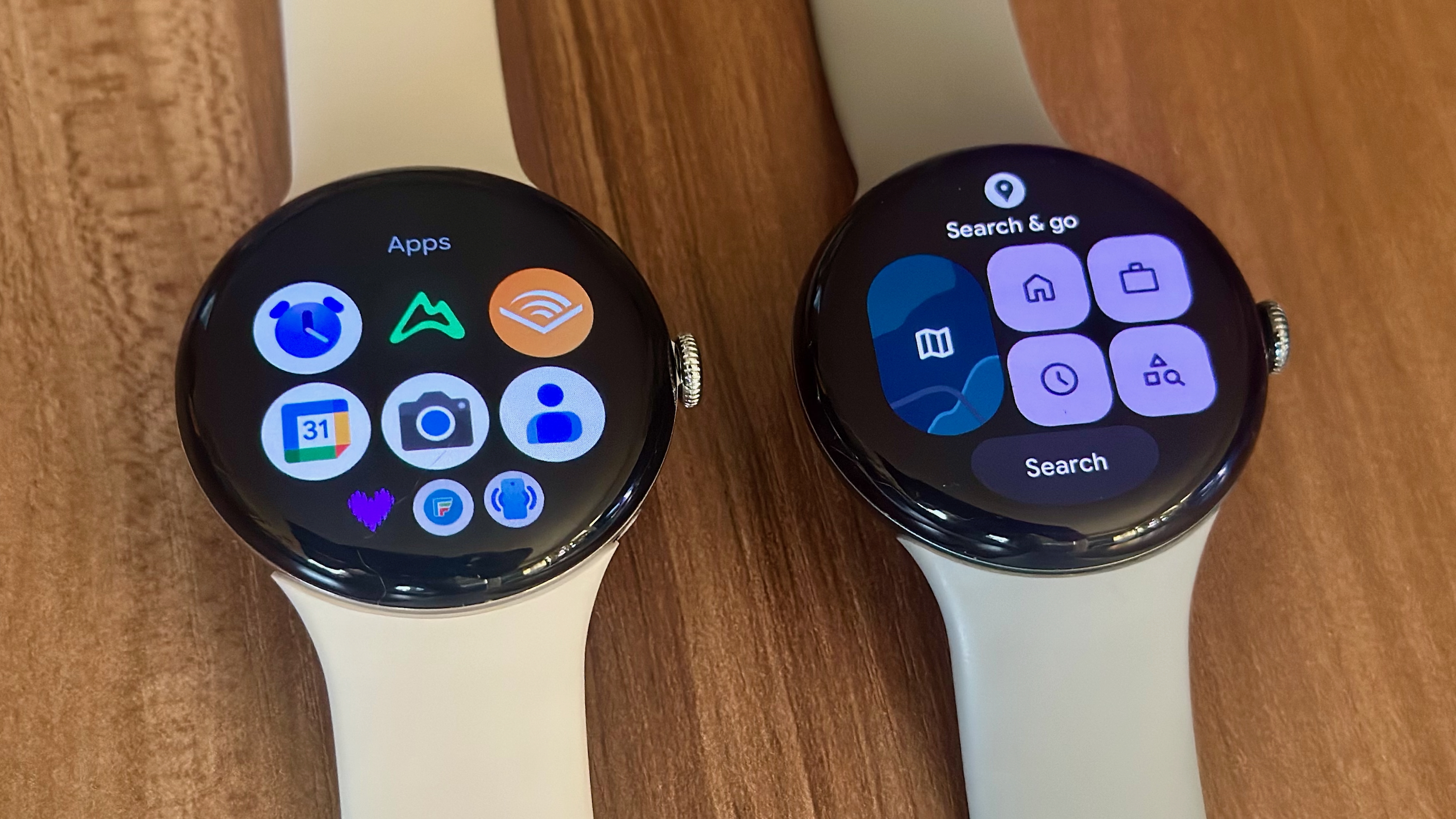
- Rounded 3,000-nit, 60Hz display stretches right up to curved edge
- Design is now user-repairable, though not especially rugged
Both Pixel Watch 4 models measure the same size and weight as their Pixel Watch 3 predecessors, with the same band mechanism for old straps to carry over. The complimentary fluoroelastomer Active band is comfortable enough, but I prefer other Pixel Watch bands, like Sport for workout breathability or Stretch for sleep tracking.
The 41mm model is pleasantly light (~55g with band), on par with sportier watches, while the 45mm model (~67g) is significantly comfier than my Galaxy Watch 8 Classic or other steel-heavy flagship smartwatches. The crown remains as pleasant to use as ever, while the side button is more annoying to press.
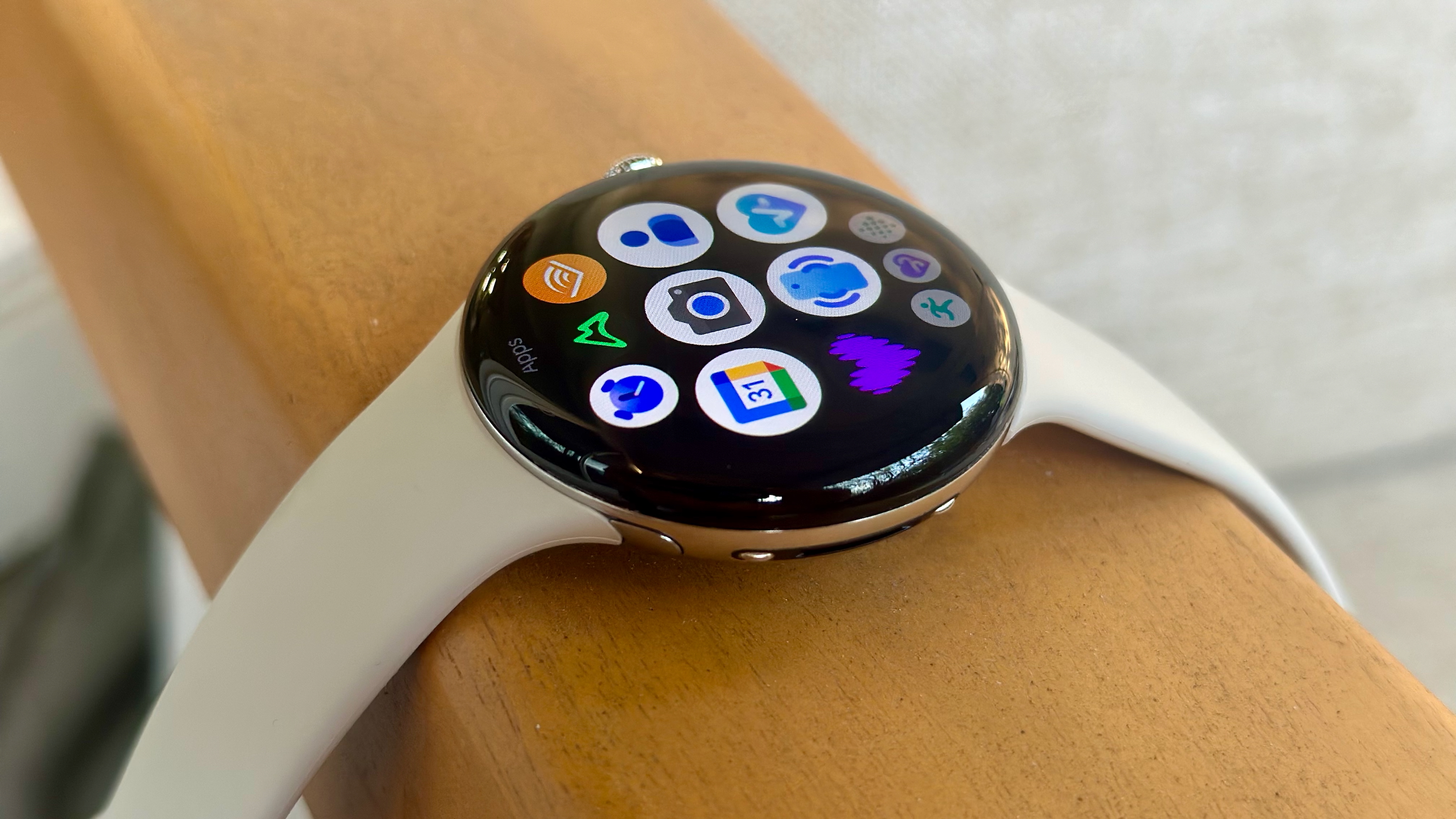
Even though the overall feel hasn't changed, the Pixel Watch 4 design feels like the series' final form: the look Google always wanted to pull off.
Older models' rounded edges contrasted oddly with the flat, bezel-less top, giving them a naked, artificial look that not everyone liked. The domed Actua 360 display is a more natural design progression, while also stretching the touchscreen to the edge, removing the wasted border space I hated on the Watch 2.
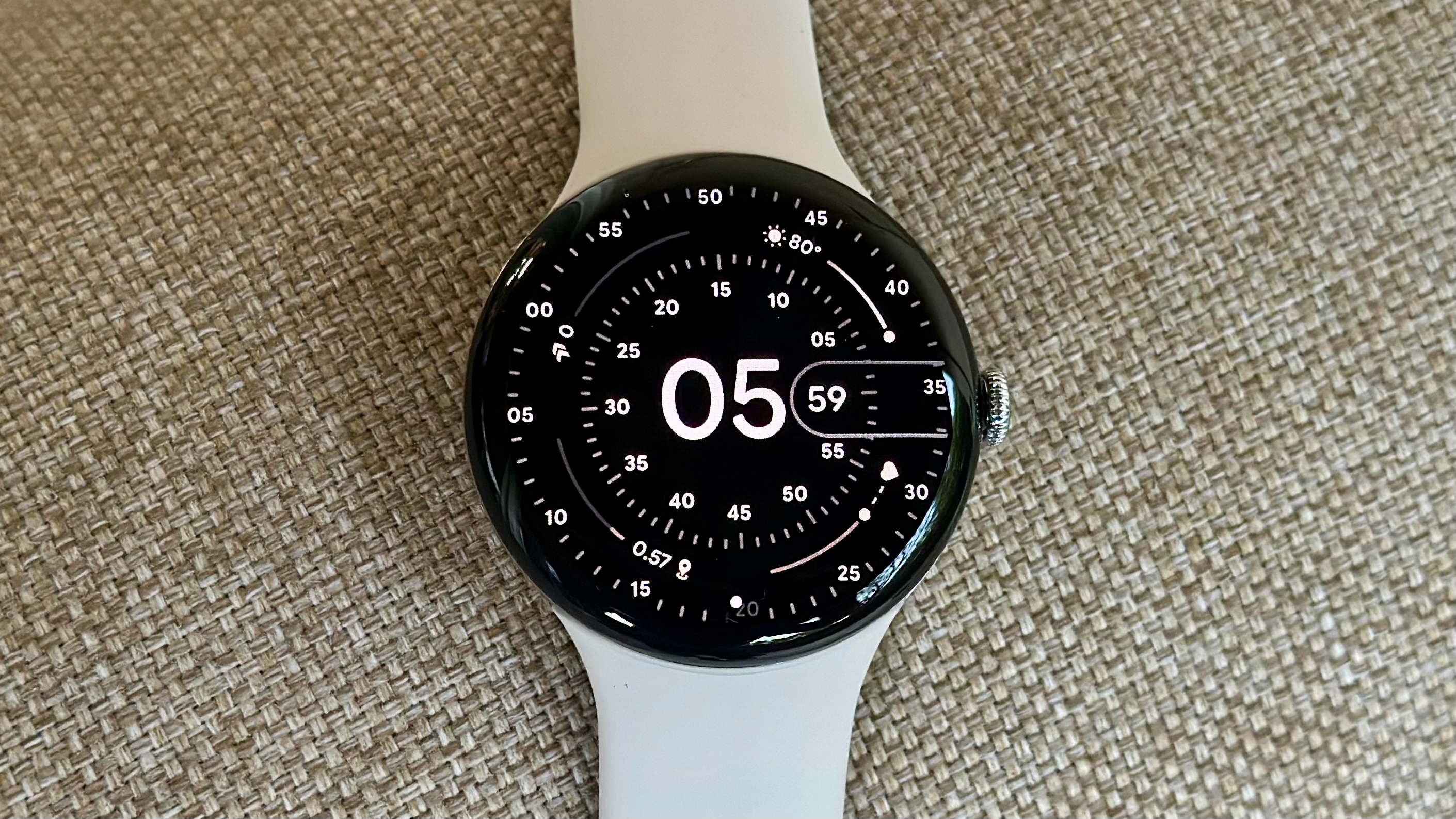
You'll need time to adjust to the domed display, which embellishes the Wear OS 6 effect of magnifying centered content. It's certainly helpful for making notifications and Tiles more readable, but you don't usually see warping like this on a display, and the dome adds slight resistance to left-right swipes.
I can't predict whether you will like the display. My coworkers who've seen it for themselves either think it's the "best looking display" on any smartwatch or it's a weird distraction. But you won't know until you get your hands on it.
In my case, it's grown on me, with the display's vivid brightness and smooth scrolling improving the experience. In particular, Google's 1.49-inch 45mm model looks more natural than before, and I appreciate how Wear OS reflows content to leverage that extra space.

Another important upgrade is how Google made the Watch 4 fully repairable. I haven't attempted it myself, but knowing I can remove the bands, unscrew two screws with a cheap bit to loosen the real glass seal, and access the components in 20 minutes is exciting.
Most smartwatches' components are fused with heat and glue; an expert can disassemble and resolder them, but with no guarantee they'll still work or maintain waterproofing. Google's 100-page repair manual ensures you're not dependent on the warranty if something goes wrong.
Google's signature bezel-less design and missing sapphire glass have always made it more vulnerable to scratches and cracks than other fitness watches. I still wouldn't recommend it to mountain climbers, but it's easier to recommend for everyday athletes thanks to its repairability.
Google Pixel Watch 4 hardware, battery, and charging
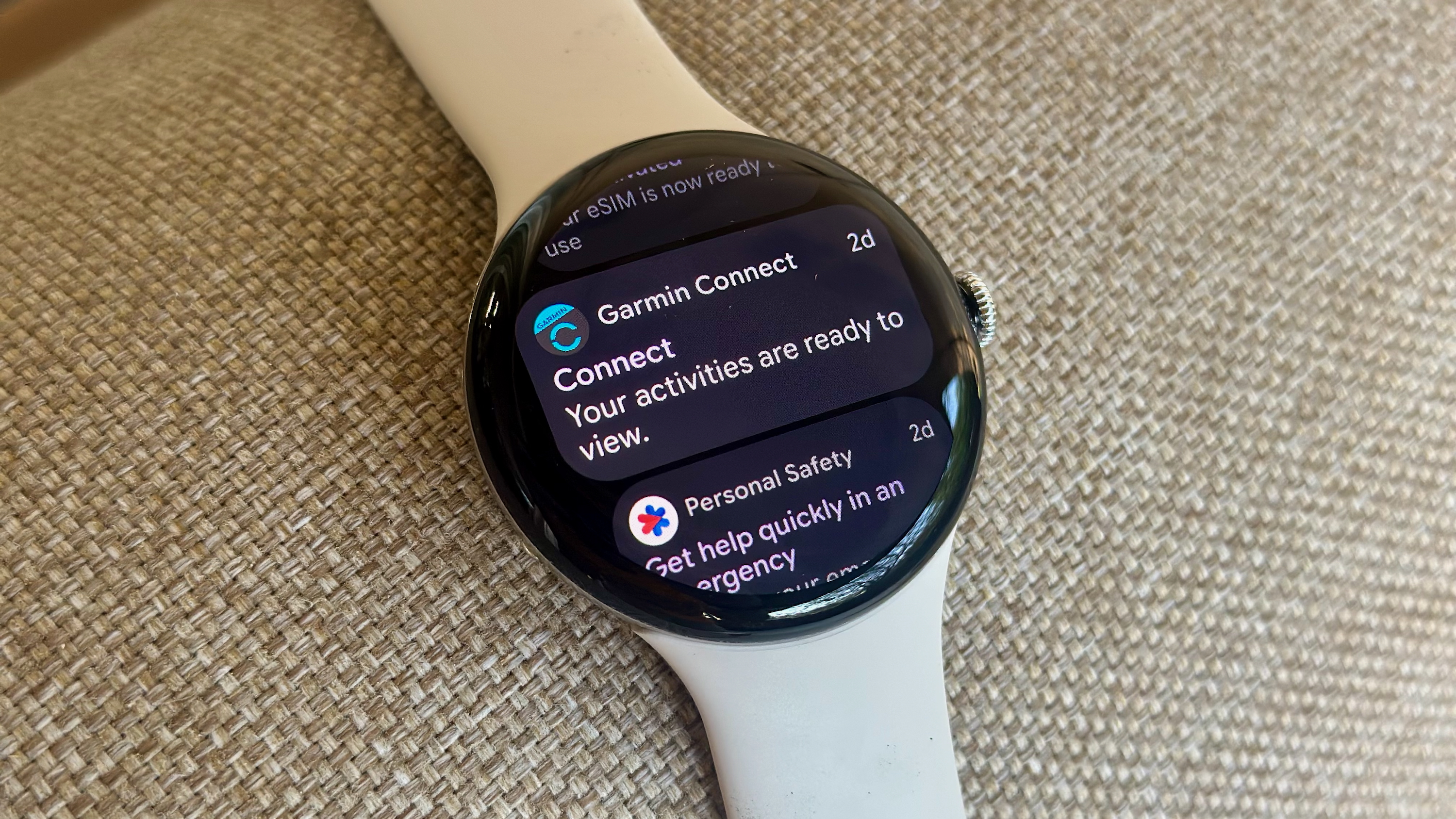
- Snapdragon W5 Gen 2 adds satellite but only minor efficiency boost
- Battery life continues to creep upwards to two-day range
- Charging is significantly faster with new Dock
I expected the Watch 4's Snapdragon W5 Gen 2 to deliver a generational performance boost, the culmination of Google and Qualcomm's RISC-V partnership. Instead, Qualcomm used the same 4nm process and quad Cortex-A53, though it's 20% more efficient.
You won't find any lag navigating through menus or notifications, while anything that requires internet — like Gemini commands or searching the Play Store — has minimal loading. Without your phone on hand to relay things, though, my Watch 4 LTE can be slow at some tasks, like pulling up Google Maps directions.
I suspect the Gen 2 will be a stopgap chip, with the Pixel Watch 5 enhancing on-device Gemini smarts and overall speed. But hypotheticals aside, Watch 4 performance is fast enough for now.
Only Watch 4 LTE buyers will get the coolest W5 Gen 2 perk: satellite SOS that connects to Skylo's NB-NTN for emergencies in cellular dead zones. If your phone has satellite, it might feel superfluous, but since the Watch 4 will probably outlast your phone battery, it could easily pay off when you desperately need it.
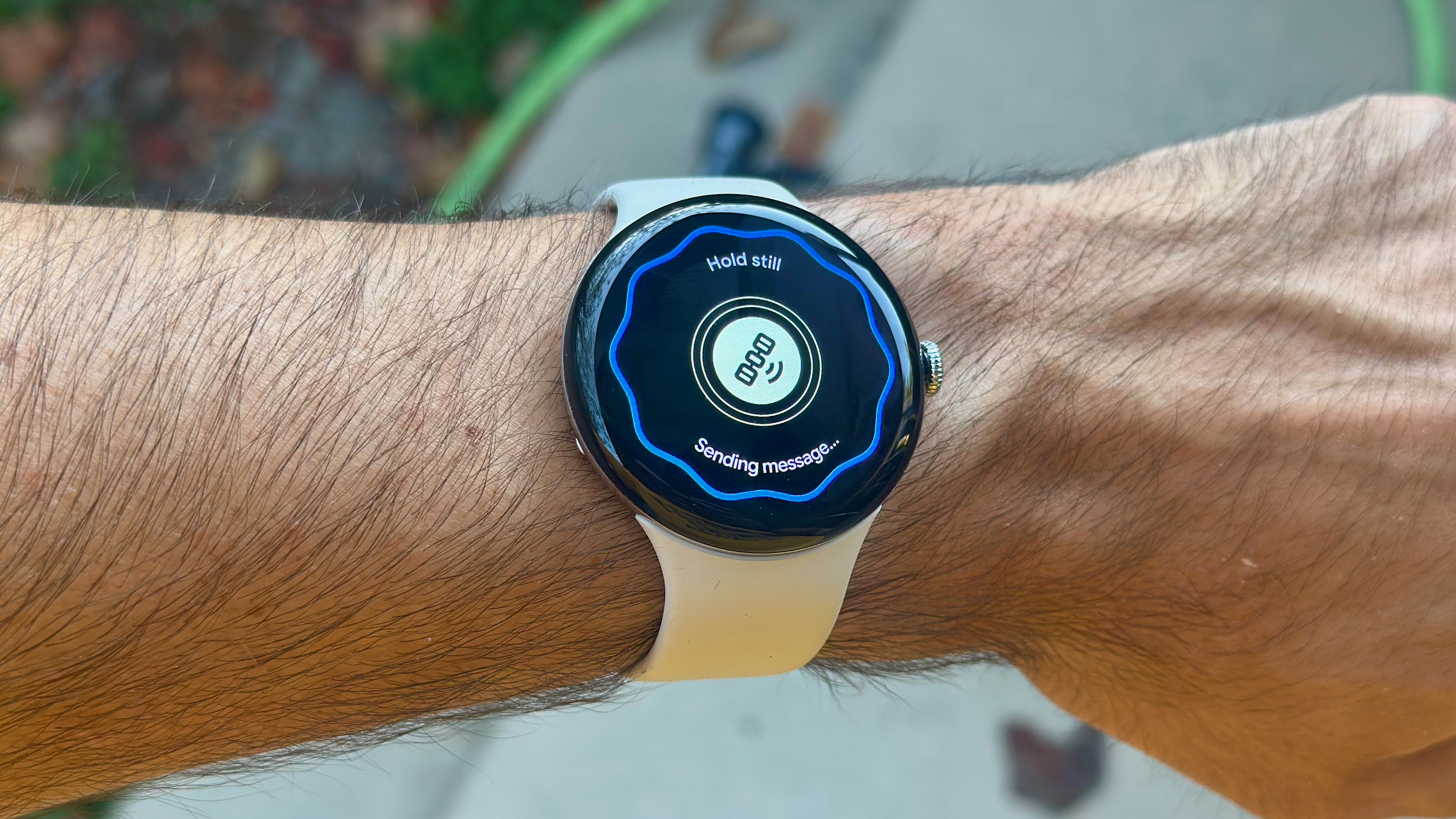
Google also gave the Watch 4 a new coprocessor that's "25% faster at half the power," tailored for on-device AI and background tasks. Then you have a more efficient connection between phone and watch via Bluetooth 6, on top of a 10% software efficiency boost from Wear OS 6.
The combined effect on battery life is subtle, but significant. You won't notice a difference for power-hungry tasks like phone calls or app use. But my Watch 4 45mm will get through an eight-hour workday of HR tracking, notifications, and AOD — or a night of HR, SpO2, stress, breathing, skin temp, and other stats — and only use about 15% battery, when an older Pixel Watch might have lost 33% in that span.
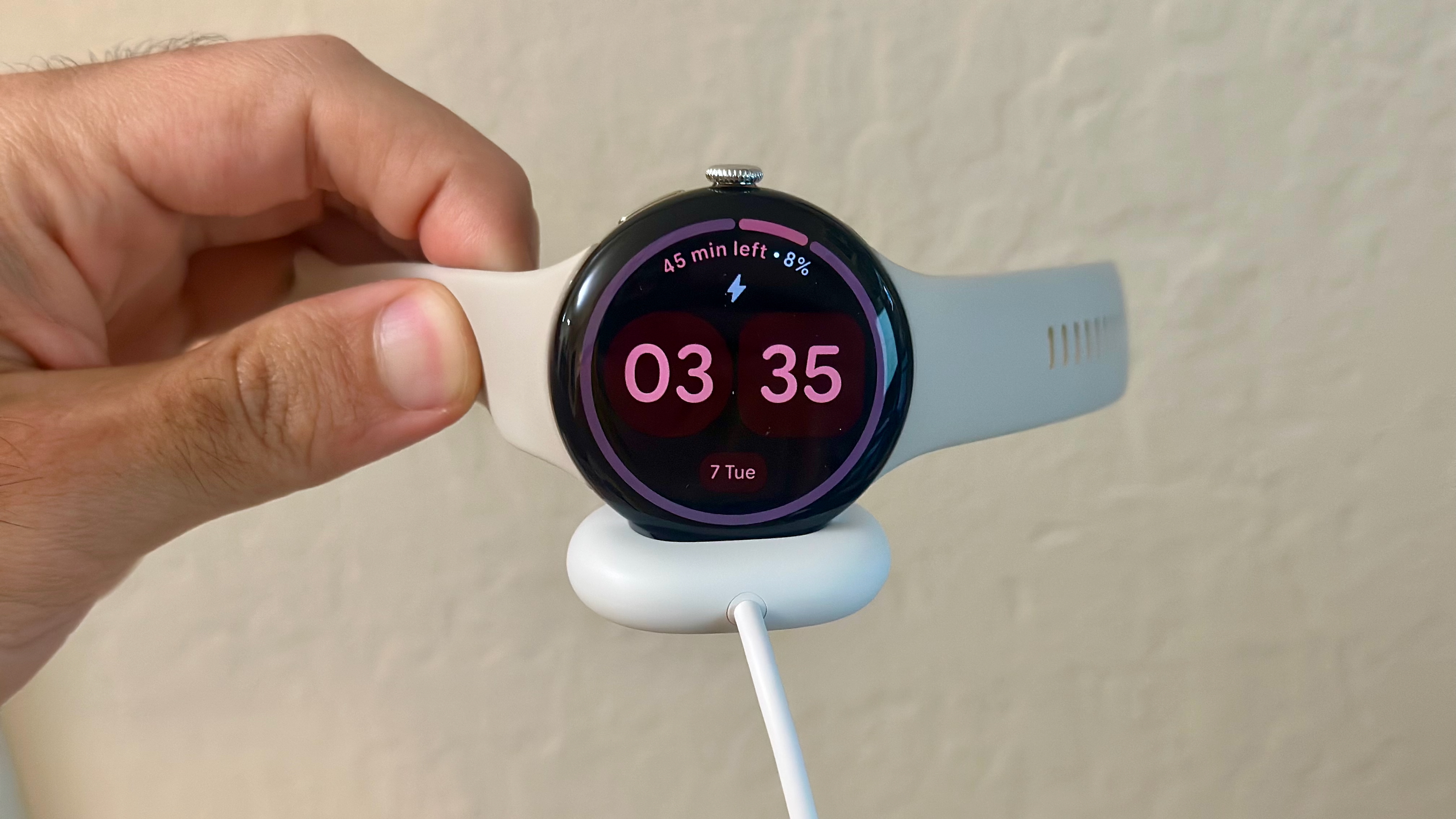
Even better, the Watch 4's Quick Charge Dock is absurdly fast. You might resent switching to a new proprietary charger, but trust me, it's worth the switch.
Yesterday, I finished a run at 30% power; I set a 15-minute timer, popped the Watch 4 on the Dock, took a shower, and came out to find it at 80% as the timer went off.
I no longer have to worry about scheduled charging times or my watch unexpectedly dying, so long as I charge it in convenient moments when I wouldn't wear it anyway.
Quick charging on smartwatches has become more common, but I appreciate how Google's Dock makes it easy to check time remaining. You do need a hard, solid surface for the Dock to sit, or else it's easy for the Watch 4 to become misaligned.
Google Pixel Watch 4: Health and fitness
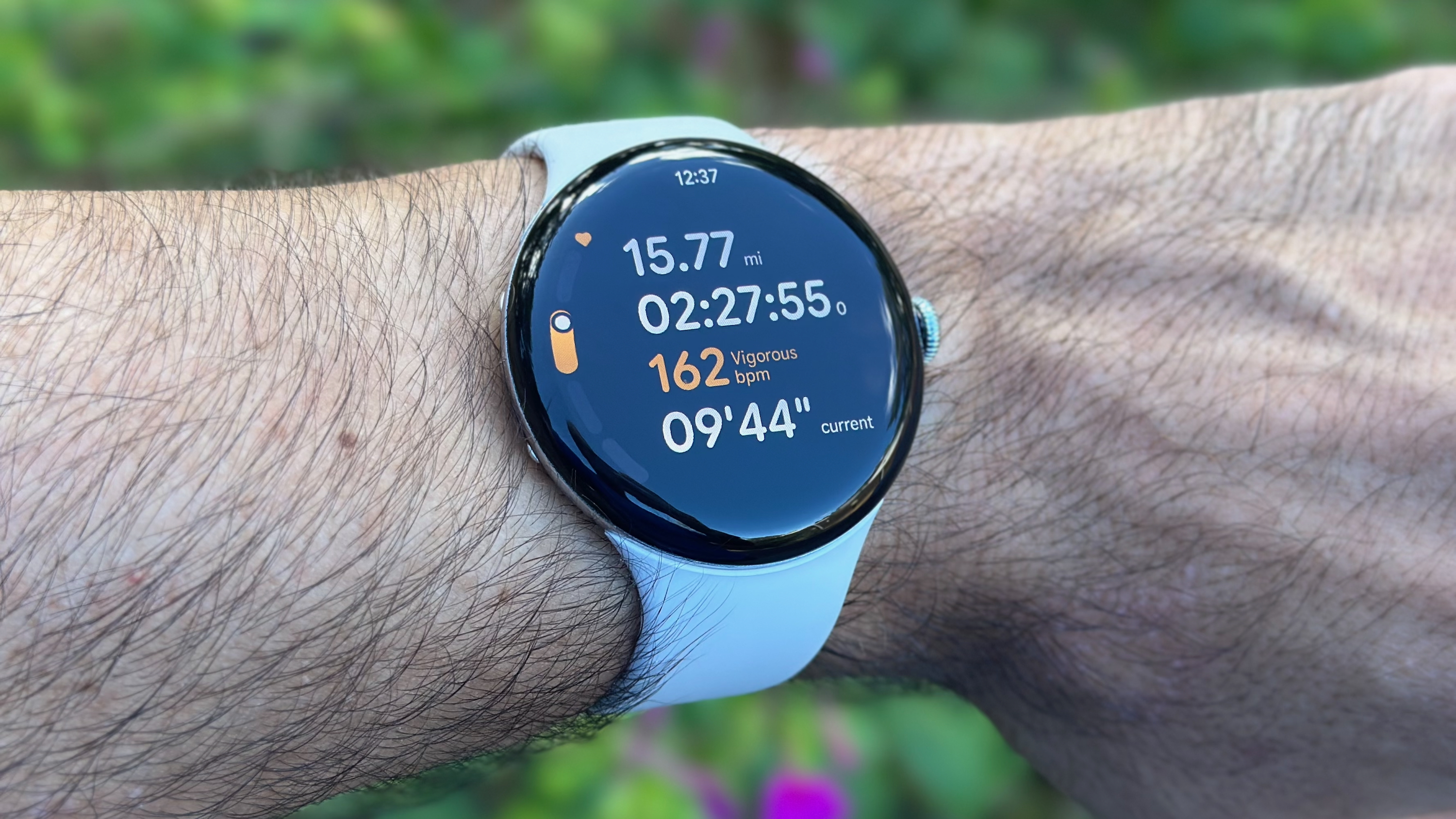
- GPS accuracy has significantly improved, while HR accuracy is consistent enough for most athletes
- Sleep tracking is stricter than on most watches, with plenty of health insights
- Fitbit Personal Health Coach beta will transform the Watch 4 experience
If you're considering buying the Pixel Watch 4 for fitness, my in-depth Pixel Watch 4 fitness guide has several HR and GPS accuracy tests. The new dual-band GPS is both reliably accurate in tough conditions and surprisingly battery-efficient, only using about 8–10% Watch 4 capacity per hour. HR accuracy remains unchanged from the Watch 3, providing reasonably close readings to a chest strap in normal conditions but slightly underestimating HR during harder workouts.
I also detailed my wishlist of missing fitness tools on other watches: I'm waiting for Google to let us build offline GPX routes in Maps, add on-watch tracking of indoor exercise reps for the gym or at home, and add specific features like running power, aerobic/ anaerobic Training Load split, and post-workout recovery time.
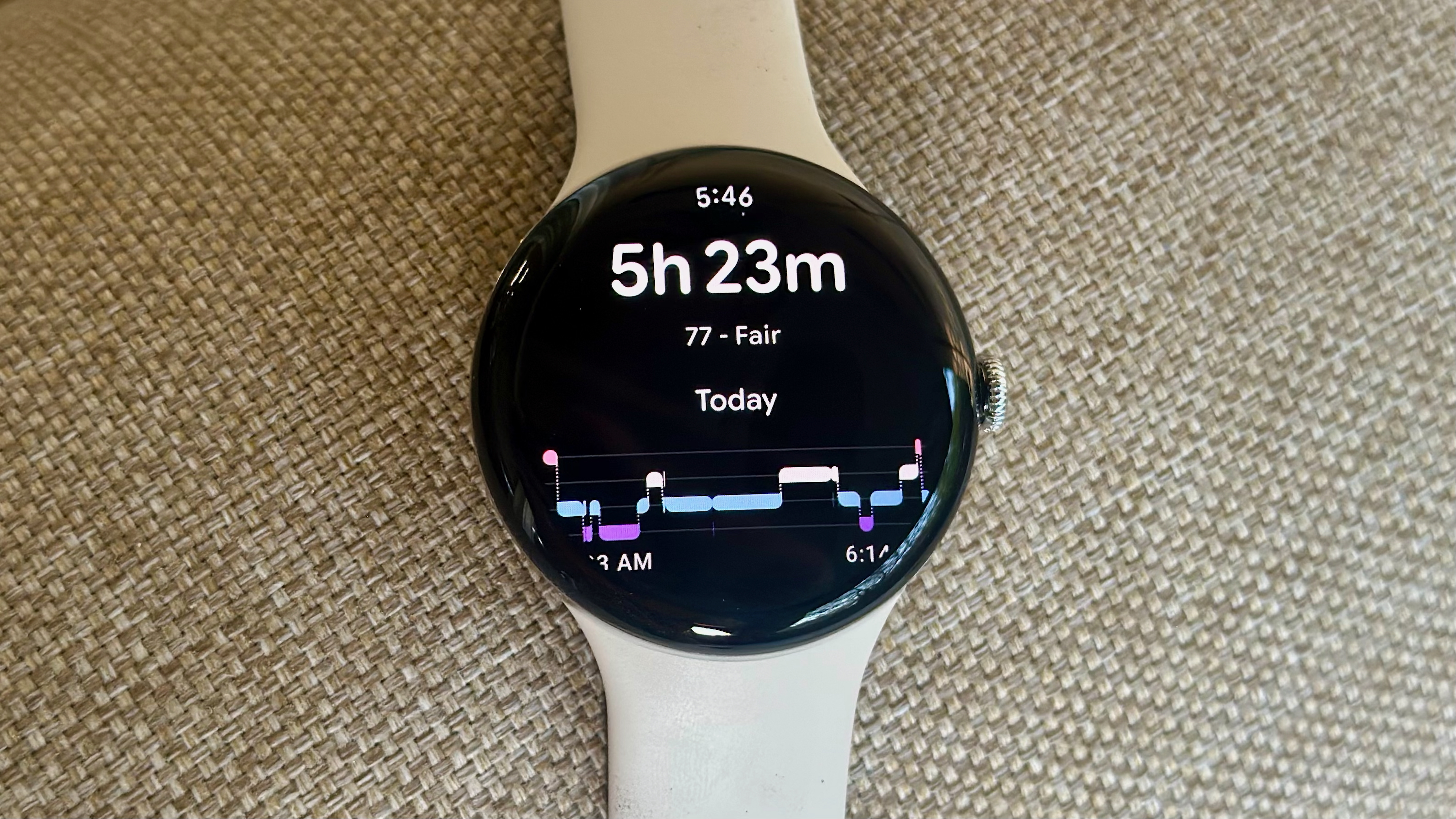
On the health-tracking front, the only new hardware is the skin temperature sensor, designed to detect illnesses if your body strays out of its usual range. Otherwise, you're getting Google's usual suite of Fitbit sensors. During the day, it'll warn you of any heart rhythm issues or Loss of Pulse in emergencies, but most of its insights come at night.
Google's stats for my RHR, SpO2, HRV, breathing rate, and others all seem to align with what other watches register for me; the only difference from other watches is that Google is more prone to judge my light, restless sleep as being "Awake," even when I don't recall ever waking up.
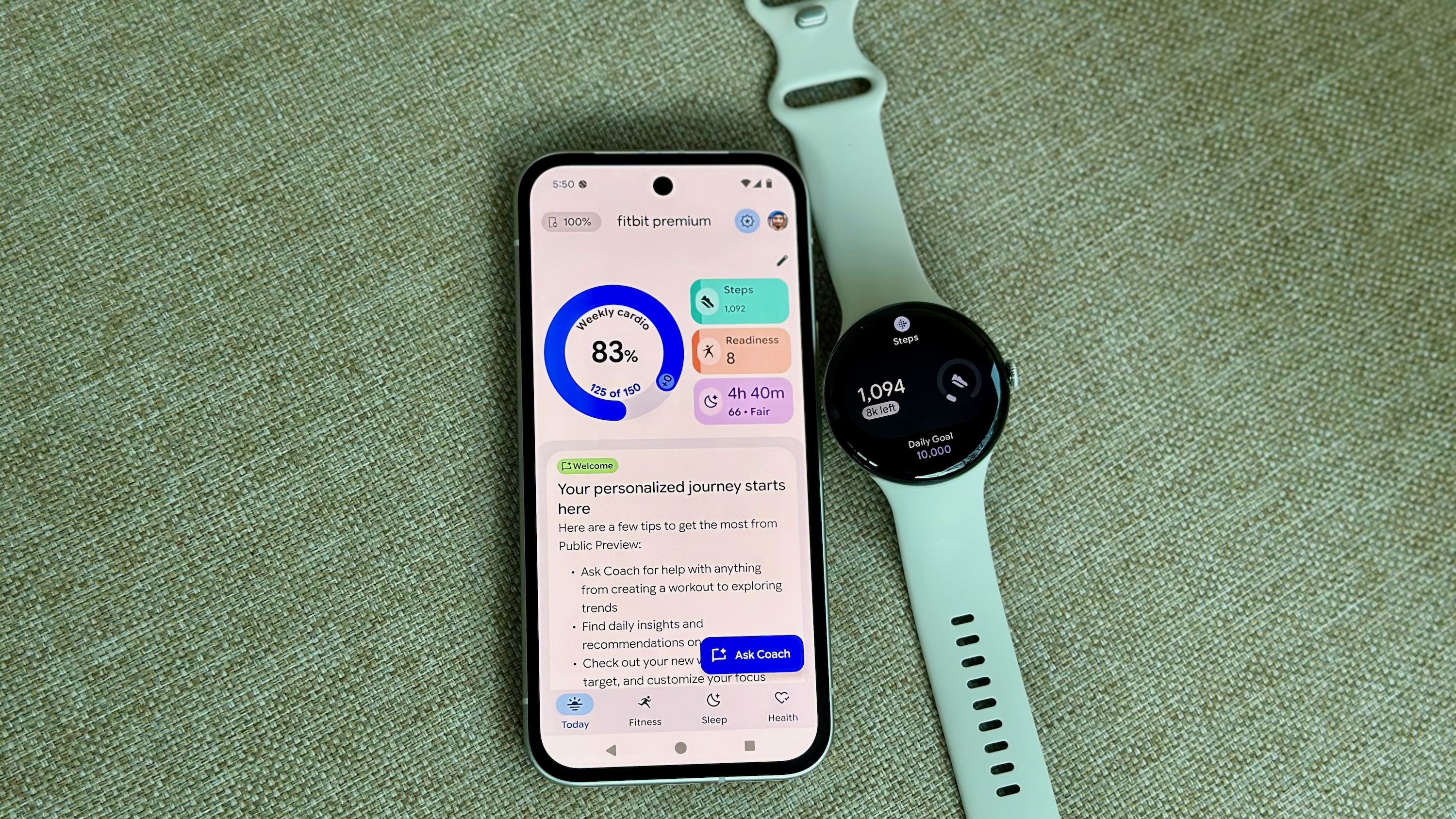
It's tricky to review the Pixel Watch 4's health and fitness experience today, however. Why? Because the Fitbit Personal Health Coach preview fundamentally changes the conversation. The full version won't launch until 2026, but critiquing the current lame-duck Fitbit app for things the new version will solve feels silly.
In my Pixel Watch 3 review, I noted that Google needed longer-term plans for multiple sports instead of daily running suggestions and Cardio Load; now, you can build a weeks-long, personalized training plan across dozens of sports and over 1,000 exercise types, after about 5–10 minutes of AI Q&A, with more allowance for rest days.
Likewise, while I find the current Fitbit UI unintuitive, burying useful trends and reports in submenus, the Fitbit preview highlights relevant trends, good or bad, with contextual "Insight" cards in the Today tab.
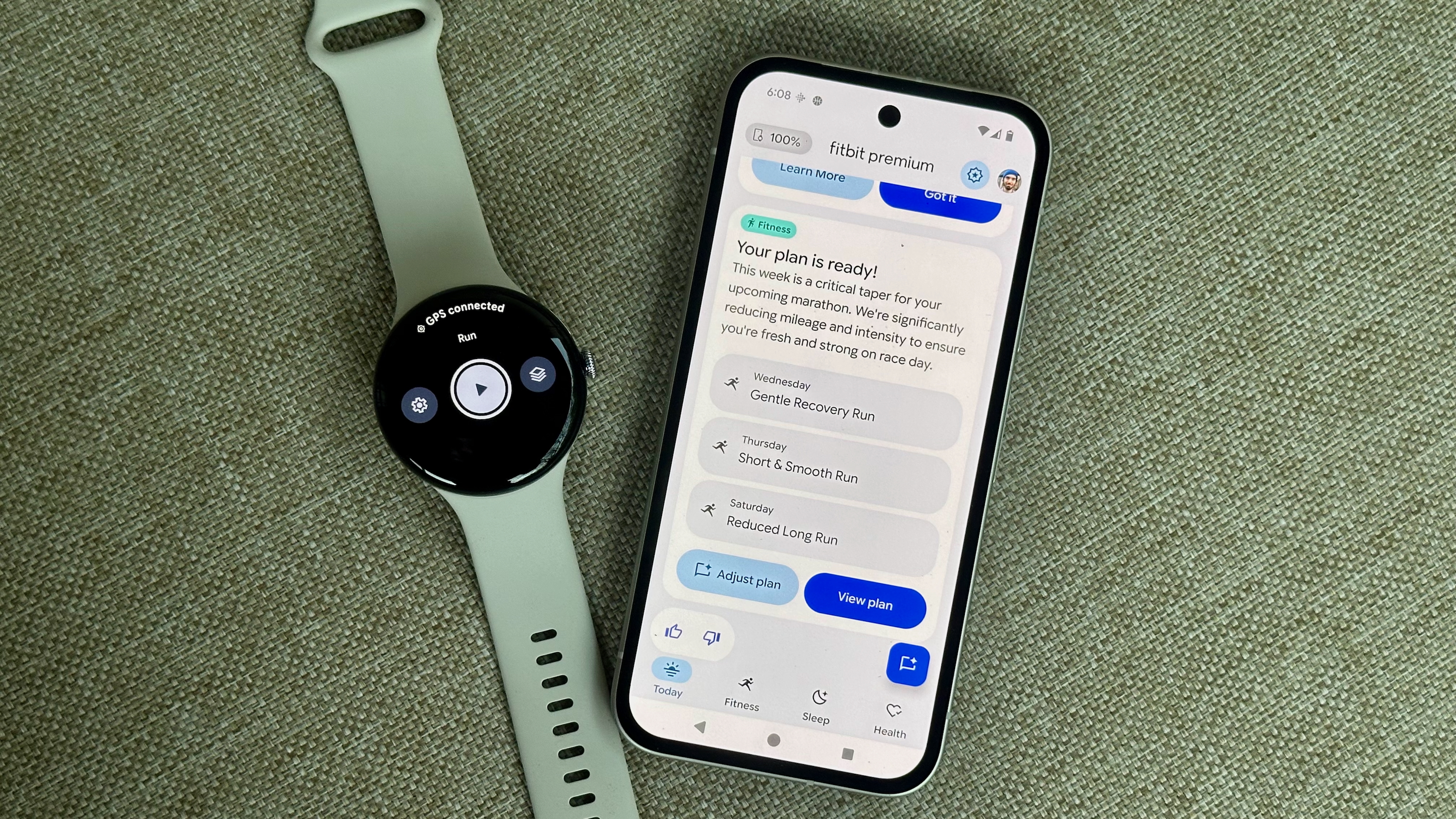
I've already built a workout plan, tailored for my upcoming marathon, and asked the Gemini-based coach to switch today's workout because I'm working late (on this review). I can't judge its usefulness without weeks of testing, but the customization, flexibility, and inspiration for cross-training workouts all intrigue me.
Whether the Fitbit Coach lives up to Google's promises or not, this update fundamentally ties Fitbit and Gemini together on the Pixel Watch 4. In a few months, AI-made training goals and LLM summaries of your health trends will define the Watch 4 experience.
Google Pixel Watch 4: Software and Gemini
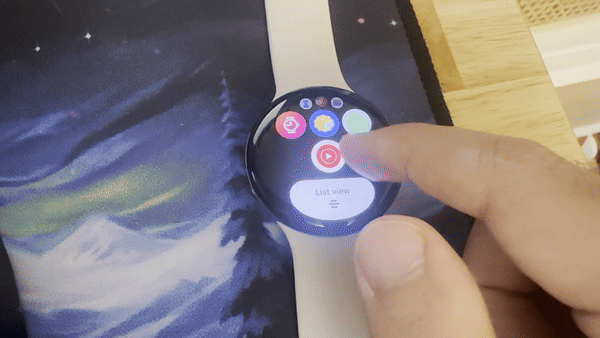
- Gemini Raise to Wake is one of my favorite features
- Wear OS 6 is a significant, charming update
- Update longevity is still a question mark
Wear OS 6 has already come to older Pixel Watches, but it's still worth praising as one of the best parts of using the Pixel Watch 4.
The new Material 3 Expressive UI matches the domed display, expanding or shrinking content depending on its display placement; the smooth, dynamic scrolling animation is hypnotic, both for the app drawer and notification cards.
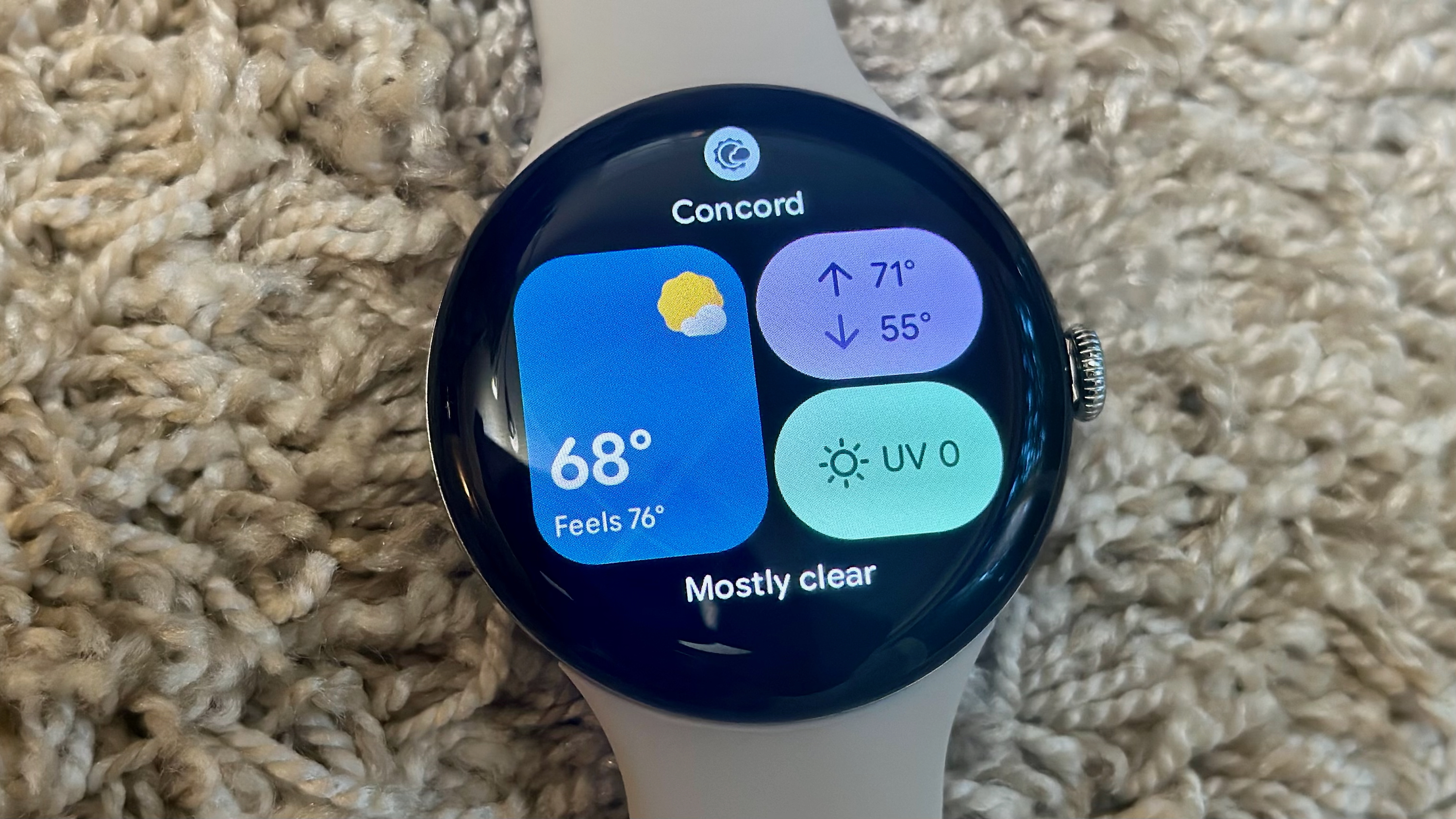
The new Tile format can fit more information and shortcuts than before. I prefer Samsung's multi-info Tiles, which let you scroll to find more information and combine related apps into one Tile, but Google's solution is the next best thing.
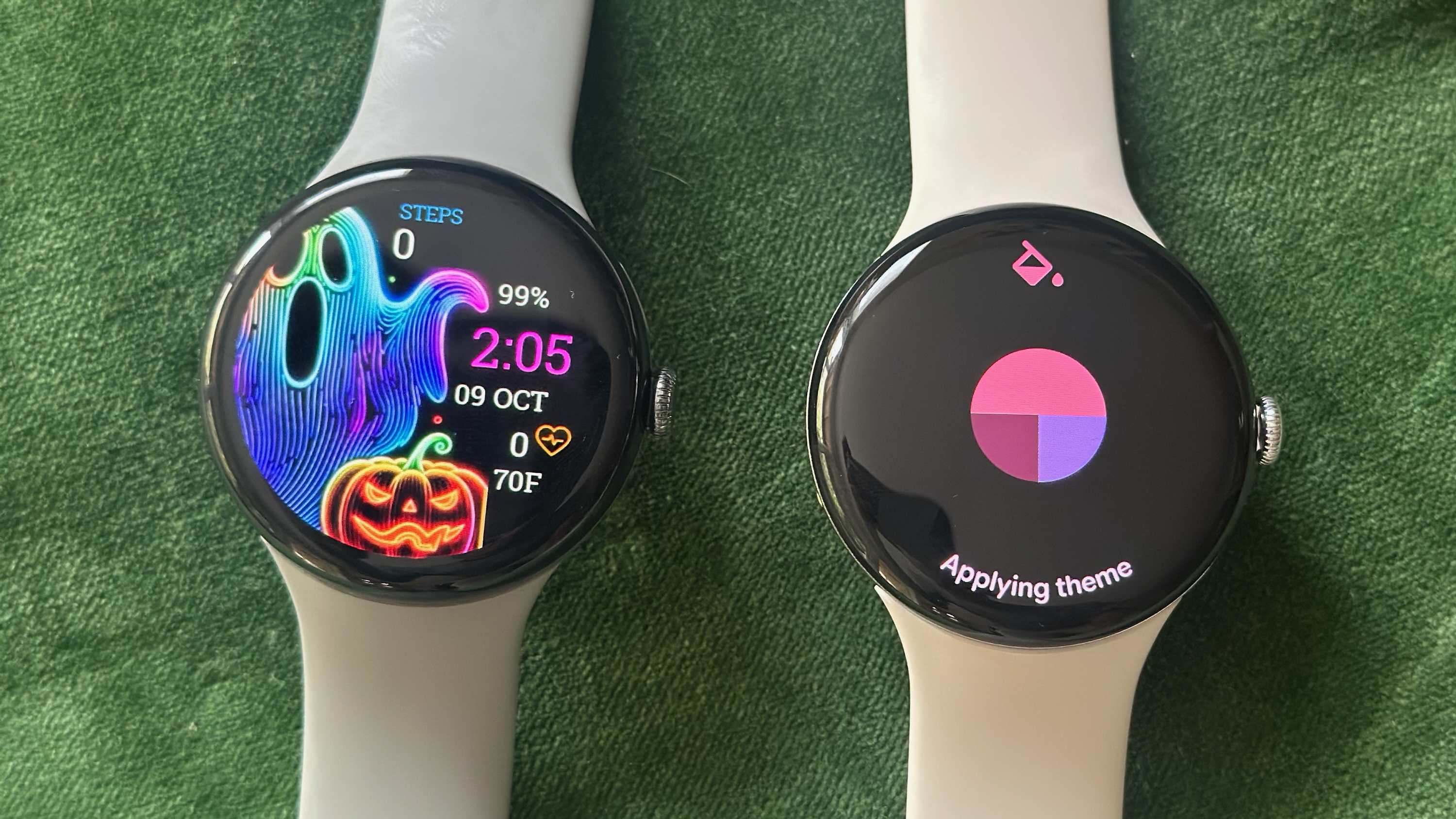
Google gave the Pixel Watch 4 new watch faces that fit extra complications or clock elements into the extra space. Even cooler, Wear OS 6 changes the UI's color theme based on which watch face you select. Plus, Google brought back third-party watch faces support for tens of thousands of options, though you can only apply themes from Google faces.
Wear OS 6 was a much-needed breath of fresh air that makes the Watch 4 more fun to use, and Google's speedy updates for last-gen watches should pay off over the next 2–3 years. My only complaint is that Google only guarantees two version updates, while Samsung offers three or four.
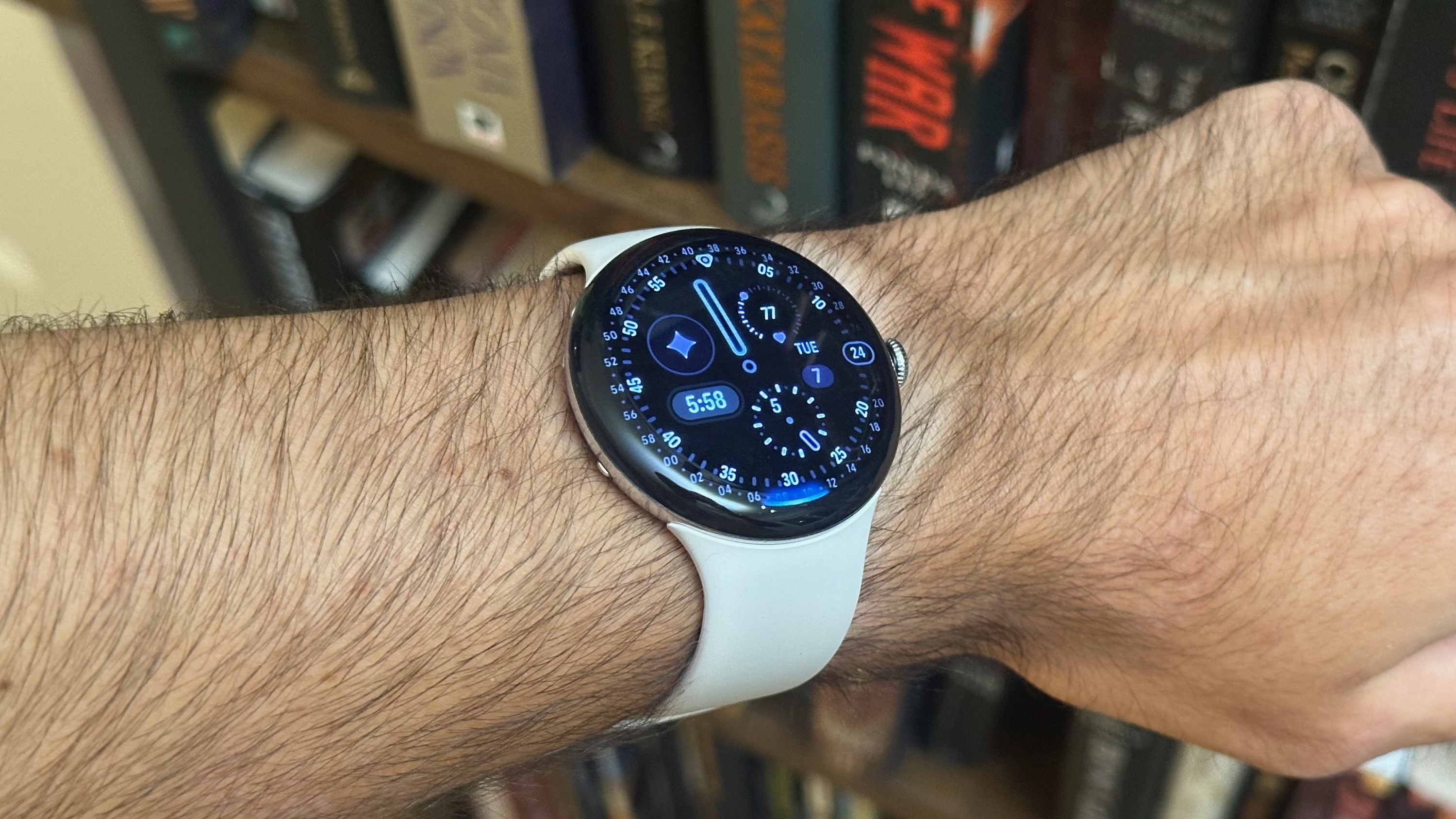
Gemini on Wear OS isn't exclusive to Pixel Watches, either; you get LLM-generated answers and integration with Google apps on most Wear OS watches. But Google gave itself an exclusive twist: Raise to Talk.
As the name implies, you no longer need to say "Hey Google" or hold down the Side button; you just raise the Pixel Watch 4 to your mouth and start talking.
There's not much to say except that I love this alternative and no longer want to go back to the old ways. It's convenient and mostly seamless, though anyone who gesticulates as they talk may deal with false positives. You can change its Settings to make it more or less sensitive.
Competition
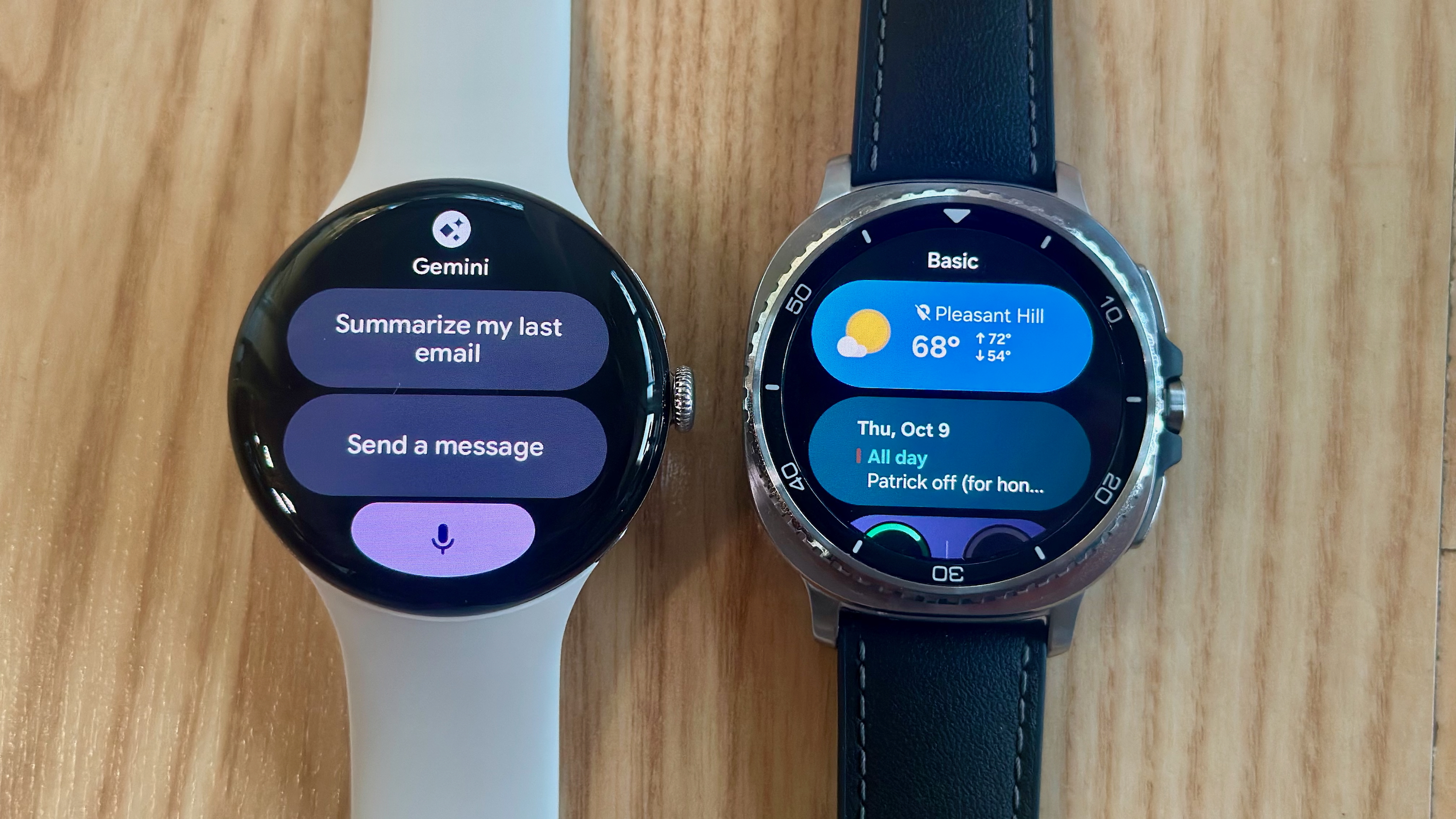
Galaxy Watch 8 is the Watch 4's most serious rival. Both cost $349, launched with Wear OS 6, last 1.5–2 days per charge, and sport two comparably-sized, 3,000-nit displays. Samsung's design is skinnier and more rugged with sapphire glass, but with slower charging and no crown. Samsung Health has unique data like antioxidant index, with no subscription (for now), but no Gemini-based coaching.
If you want Wear OS and longer battery life, the OnePlus Watch 3 can hit 3–6 days per charge, plus equally speedy charging. You get a slightly dimmer display, but with sapphire glass and eye-friendly DC dimming. The OHealth app has improved, but it's still well short of what Fitbit offers.
Otherwise, the Pixel Watch 4 is competing against other fitness watches. You can consider a Garmin watch to get personalized coaching without a subscription and weeks of battery life, at the expense of app smarts.
Google Pixel Watch 4: Should you buy it?
You should buy the Google Pixel Watch 4 if...
- You're a fan of Google's aesthetic (both the droplet display and Material UI)
- You're ready to upgrade your Pixel Watch for better battery, charging, fitness tracking, and Gemini
You shouldn't buy the Google Pixel Watch 4 if...
- You'd prefer a flat display and classic bezeled design
- You're not willing to pay for Fitbit Premium eventually
Unless Google ever launches a Pixel Watch "Ultra" or "Classic," I don't think we're going to see a dramatic design change anytime soon. Future models might have faster performance, new Gemini tricks, and further battery optimization, but this should be the template moving forward.
You can always wait another year for Google to finish polishing its Gemini and Fitbit coaching experiences, but from a hardware perspective, the Pixel Watch 4 feels like an excellent jumping-on point. If this package doesn't tempt you, I don't think future Pixel Watches will, either.
The new Pixel Watch 4 sports a striking curved display, but equally important are the new Snapdragon chip, on-device Gemini responses, dual-frequency GPS, blazing charging speeds, and improved battery efficiency.







